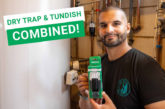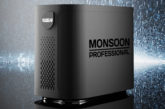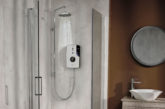
With a heritage of well over 100 years, Stuart Turner knows all there is to know about pumps. The company’s Training Manager, Richard Ballard, answers some common questions.
How much increase in pressure can be expected from a mains boosting pump on a small house (three-bed semi). Would I need to find room to site a large tank?
The Mainsboost Flomate range is ideal for smaller properties with one or two bathrooms experiencing low incoming mains water pressure. They are designed to boost the incoming mains pressure, some models capable of providing up to 3.2 bar pressure at up to 60 litres per minute, which is more than adequate to run two showers.
I would suggest for a typical three-bed semi with one bathroom a Mainsboost Flomate MBF 12 pump would definitely offer an improvement. However, if there is room, then I would install a Mainsboost Flomate MBF 60 or 80 which both offer additional water storage alongside the pump, (60 or 80 litres). This would give the homeowner a regulated flow of pressurised water – up to 3.2 bar and up to 16 litres per minute for a pre-defined duration, after which the pump continues to deliver 12 litres per minute at an additional 1.5 bar above the incoming mains water pressure, until the vessel recharges.
Mainsboost Flomate units connect directly to the incoming mains water supply and are designed to sit neatly within any standard kitchen cupboard. The pump on its own, the MBF 12 and smaller vessel units MBF 60 and MBF 80 will fit in the cupboard under the kitchen sink, which is typically where the incoming mains water supply is located. The taller units (MBF 100, 200 & 300) fit within a larder cupboard. Typically these units are installed in a utility room and out of the general kitchen layout.
Do you have any installation tips for putting a Mainsboost into a small loft space with a low pitched roof?
Ideally, the closer you can locate a Mainsboost unit to the incoming mains supply the better; less pipework and less work, but it is possible. In this instance a ‘Mainsboost Horizontal’ system would be ideal.
Again, the horizontal versions connect directly to the incoming mains water supply and fill with water under mains pressure. When the vessel is full, it is charged and has a volume of pressurised water ready to go. Mainsboost horizontal units are supplied with an unique mounting cradle to secure the vessel and I would always recommend adding a Mainsboost insulation jacket. This will protect the unit from hot and cold temperature extremes – this is potable water after all and should be maintained at the right temperature.
Is there any limitation to the types of items that can be linked to a lifting station when creating a new utility room below the mains drainage level? Are these units particularly noisy?
They’re not too noisy, all the mechanical parts are housed within a separate cassette, which is housed within the unit. They are reasonably quiet, but they do have some mechanical parts, so you have to expect a bit of noise when they are in use.
The Wasteflo LS5 has five inlets ready to connect to a variety of appliances. You don’t have to use all five, but typically a washing machine, dishwasher and sink would be connected. However, as some people choose to add a shower to the utility space, you could also add a shower and hand basin. You cannot connect a lifting station to a toilet though! If you wanted to add a cloakroom, you would need a macerator unit, such as the Wasteflo WC2.
Wasteflo LS5 lifting stations are really powerful and capable of pumping up to seven metres vertically, or up to 72m horizontally. The average roof height in a domestic house is 2.4 metres so these units can easily cope with a connecting a basement utility room up to the mains drainage level.
If the flow rate is too great on a universal (negative) head twin pump is there any way to reduce the pressure or limit the flow?
There’s a couple of things worth pointing out here; if the problem is that the pressure of water coming out of the shower head is too great, you could switch the shower head for a larger version. This will increase water flow but reduce water pressure. The only consideration is that you will use more water, faster and may run out of stored water in the tank.
You can reduce the pump performance by closing the outlet isolating valves by about 30% on both the hot and cold flows but you must never restrict the water flow on the pump supply side. This will starve the pump and cause cavitation.
What solution would you suggest to pump both hot and cold supplies for a 4-bedroom detached house with a vented system? The property has a main bathroom and two en-suites.
This question doesn’t tell me where the flow of water is coming from and to where. I ought to explain. Stuart Turner offers Standard (positive head) pumps and Universal (negative head) pumps. A positive head exists when enough pressure is available under gravity to provide a flow of water to the outlet. Standard pumps are designed for this scenario. A negative head is where there is insufficient pressure or head of water under gravity to provide a sufficient flow of water to the outlet. Universal pumps work in both positive and negative head situations and don’t need a gravity flow of water to start the pump.
In this instance, I would install a Monsoon Universal Twin as twin pumps boost both the hot and cold supplies equally and I suspect that a 3.0 bar will do the job. I wouldn’t go higher than 4.0 bar though, sometimes bigger isn’t always better.
If you need help to choose the right Stuart Turner product, or installation advice, Stuart Turner’s TechAssist team of technical experts is available on 0800 31 969 80 Monday to Friday.













